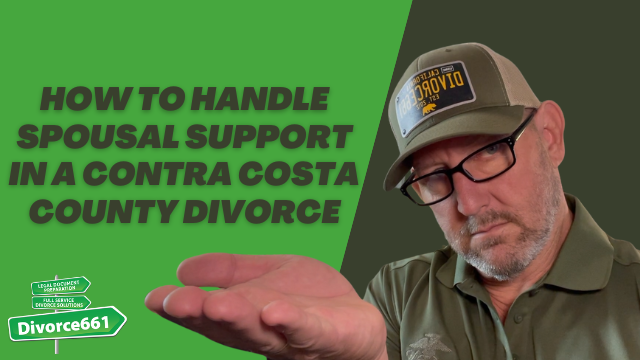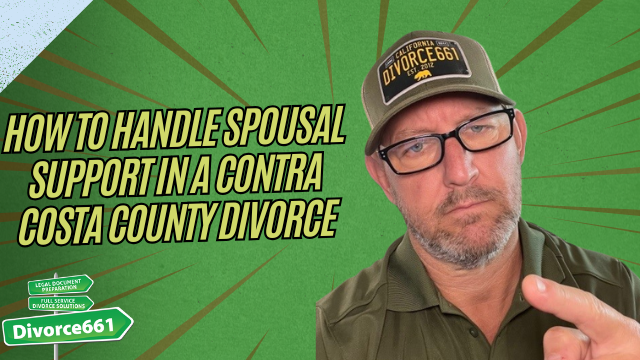How to Handle Spousal Support in a Riverside County Divorce
I’m Tim Blankenship of Divorce661. In this article I’ll walk you through the essentials of spousal support in Riverside County and California—what to expect, how temporary and long-term support differ, what judges look for, and how an agreed solution can save time and money.
Quick overview: Why spousal support matters
Spousal support (alimony) exists to help the lower‑earning spouse maintain financial stability after a marriage ends. The goal is fairness: immediate relief where needed and a path to self‑sufficiency when appropriate. How support is set and how long it lasts depends on whether the marriage is short‑term or long‑term and on the unique facts of each case.
Temporary spousal support: immediate relief
Temporary (or pendente lite) spousal support is designed to provide money for living expenses during the divorce process. It is usually determined early, often before property division or final orders are resolved.
How it’s calculated
- Income and deductions: Courts use both parties’ incomes and allowable deductions to estimate need and ability to pay.
- Guideline formulas: Many counties use a guideline formula or worksheet to produce a starting point for temporary orders. The formula adjusts for payroll taxes, health insurance, and other common deductions.
- Purpose: Temporary support is meant to maintain basic living standards until the final agreement or judgment is entered.
Long‑term spousal support: fairness over time
When the final spousal support decision is made, the court or the parties look at a broader set of factors to determine amount and duration. Unlike temporary support, long‑term support deals with the couple’s entire financial picture and future needs.
Key factors courts consider
- Length of the marriage (short vs. long marriages)
- Standard of living established during the marriage
- Each spouse’s earning capacity and job skills
- Contributions as a homemaker or to the other’s career
- Age, health, and any custodial responsibilities for children
- Assets and responsibilities assigned in property division
Typical duration rules
- Marriages under roughly 10 years: Courts commonly set spousal support for a period equal to about half the length of the marriage (this is a general guideline, not a strict rule).
- Long‑term marriages: For longer marriages, support may be extended, modified, or in some cases ordered indefinitely, depending on the parties’ circumstances.
Each case is unique—how to approach it
There is no one‑size‑fits‑all answer. Temporary orders deal with immediate needs; final spousal support aims for a balanced, sustainable solution. The best outcomes come from accurate financial information and realistic projections of what each spouse can earn and reasonably need.
An example: cooperation that avoided court
Here’s a real example that illustrates how working together can simplify the process. In one case, one spouse had been a stay‑at‑home parent and had limited recent work history. Rather than litigate, both parties negotiated support terms that reflected that reality. We drafted those terms into a court‑compliant agreement, included the language in the judgment, and the court approved it without a hearing.
Why this matters:
- It protected the stay‑at‑home spouse’s financial needs.
- It avoided costly, time‑consuming court battles.
- It produced a clear, enforceable judgment everyone understood.
How to reach a fair agreement without court
If both parties are willing to cooperate, you can often settle spousal support without full litigation. A practical pathway looks like this:
- Gather financial documents (pay stubs, tax returns, debts, expenses).
- Estimate temporary needs and use a guideline worksheet for a starting point.
- Discuss long‑term goals: duration, amount, and conditions for modification.
- Draft a clear agreement that addresses payments, termination events, and tax concerns.
- Submit the agreement to the court as part of the judgment for approval.
How Divorce661 can help
At Divorce661 we offer flat‑fee, full‑service assistance for amicable divorces in California. Our aim is to explain your options clearly, help you negotiate reasonable terms, and produce court‑compliant documents that get approved. That approach saves money and reduces stress compared with full‑blown litigation.
Visit Divorce661.com to schedule a free consultation. If you prefer to avoid costly attorney battles and want a fair, clear support agreement, we can guide you through the process and draft the necessary documents for court approval.
Conclusion: take control of your financial future
Spousal support can feel complicated, but understanding the basics helps you make informed choices. Temporary support provides immediate stability; long‑term support looks to fairness and future selfsufficiency. Where possible, cooperation and a well‑drafted agreement can protect both parties and avoid needless litigation. If you need help navigating spousal support in Riverside County, reach out—I’ll help you explore options and draft clear, court‑ready terms.




